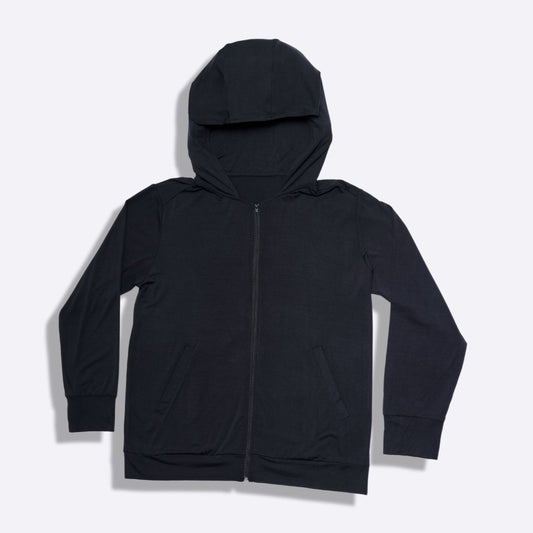
How to Fool People Into Thinking You're a Wine Snob in 5 Easy Steps
Fooling people into thinking you’re a wine snob isn’t about deception—it’s performance art. It’s social theater. And you, dear reader, are the lead actor.
Let’s break it down into five elegantly intoxicating steps.
Step 1: Master the Art of Wine Vocabulary
Wine has its own language—a glossary soaked in elegance and ambiguity. To sound like a wine snob, you’ll need to casually throw around words like:
- “Tannic” – This means the wine has a dry, puckery feel. Or so they say.“
- Full-bodied” – Use this when the wine feels like a warm hug.
-
“Elegant on the finish” – A snob’s way of saying, “Hey, this doesn’t taste bad.”
Keep in mind: it’s not what you say—it’s how you say it. Tilt your head, pause for dramatic effect, and let your words linger like a Pinot on the palate.
Here is a more comprehensive list of wine snobbery vocabulary that will make you seem like a connoisseur within no time:
Tannins
Tannins are compounds found in grape skins, seeds, and oak barrels. They give wine that dry, slightly bitter, mouth-puckering feeling.
When to use it:
“This Cabernet has bold tannins, but they’re beautifully integrated.”
Legs (or Tears)
The streaks of wine that slowly drip down the sides of the glass after swirling. These often indicate alcohol content or sugar level.
When to use it:
“Look at those legs. This wine’s got body for days.”
Finish
Refers to how long the flavor of the wine lingers after you swallow. A longer finish usually suggests higher quality.
When to use it:
“That spicy finish just keeps going. Really elegant.”
Mouthfeel
This describes how the wine feels in your mouth—creamy, silky, rough, chewy, etc.
When to use it:
“I love the silky mouthfeel. It’s like drinking velvet.”
Oaky
Describes flavors like vanilla, toast, or spice, which come from aging wine in oak barrels.
When to use it:
“There’s a gorgeous hint of vanilla from the oak aging.”
Minerality
A somewhat abstract term that suggests flavors reminiscent of rocks, flint, or wet stones.
When to use it:
“This Riesling has a beautiful minerality—so clean and crisp.”
Balanced
When the wine’s elements—acidity, sweetness, tannin, alcohol—work in harmony.
When to use it:
“Nothing overpowering. It’s incredibly balanced.”
Complex
A wine with multiple layers of aroma and flavor that change over time as you drink it.
When to use it:
“There’s a lot going on here. So complex. I’m getting spice, fruit, and a hint of tobacco.”
Jammy
Describes wines that are rich, fruity, and almost like fruit preserves.
When to use it:
“This Zinfandel is super jammy—like blackberry jam in a glass.”
Earthy
Flavors that evoke mushrooms, soil, or forest floor—common in many Old World wines.
When to use it:
“It’s got that classic earthy funk. Very Old World.”
Austere
A wine that is lean, sharp, and not particularly fruity. Sometimes needs age to soften.
When to use it:
“It’s a bit austere now, but give it five years—it’ll sing.”
Expressive
Used to describe wines with bold aromas and flavors that jump out of the glass.
When to use it:
“This Pinot is so expressive—red cherry and rose petals for days.”
Fruit-forward
Describes wines where ripe fruit flavors dominate over other elements like earth or oak.
When to use it:
“It’s very fruit-forward—think raspberry, plum, maybe even some fig.”
Tight
When a wine tastes closed or muted, usually because it’s too young or hasn’t had enough air.
When to use it:
“It feels a bit tight. Let’s decant it for a bit.”
Decant
To pour wine into another container to let it breathe, which helps open up aromas and soften tannins.
When to use it:
“Let’s decant this for at least 30 minutes—it’ll be worth it.”
Corked
Refers to a wine tainted by a faulty cork, usually smelled as moldy cardboard.
When to use it:
“I hate to say it, but I think this one’s corked.”
Flabby
A negative term for a wine lacking acidity and structure—just kind of limp.
When to use it:
“It’s rich, but a bit flabby. I just feel like it needs something more…” Proceed to look into the distance pretending to contemplate.
Savory
Non-sweet flavors—think umami, herbs, olives, cured meats.
When to use it:
“There’s a real savory undertone here. It’s not just about the fruit.”
Vintage
The year the grapes were harvested. Different years can mean big differences in flavor and quality.
When to use it:
“2010 must have been a legendary vintage for -enter wine name here-. You can really tell.”
Vertical Tasting
Tasting different vintages of the same wine side by side to compare how it evolves.
When to use it:
“I’d love to do a vertical tasting of this fine wine”
Brut / Extra Brut
Labels that describe how dry a sparkling wine is. Brut is dry. Extra Brut is bone dry.
When to use it:
“I prefer Extra Brut—it’s so clean and food-friendly.”
Appellation
A legally defined wine region, like Bordeaux, Napa Valley, or Chianti.
When to use it:
“Which appellation is this one from— it has a super classic profile.”
Step 2: Swirl, Sniff, and Sip Like a Sommelier
You don’t need to know what you’re doing. Just look like you do.
- Swirl the wine in your glass confidently. Bonus points for creating a mini wine tornado.
- Sniff as if you’re analyzing a crime scene.
-
Sip slowly, and immediately pretend you're deep in thought. Then say something like, “Ah, beautiful finish”
Boom. You’re in.
But want to know what those sommeliers ACTUALLY are up to?
Why Do Wine Lovers Actually Do This? The Hidden Purpose Behind the Ritual
Believe it or not, those exaggerated motions that look like wine theater actually serve a functional purpose. For wine connoisseurs, it’s not about being showy—it’s about unlocking every nuance and layer of the wine. Each step in the wine tasting process engages a different sense and allows a trained palate to evaluate quality, origin, and condition. Let’s break it down.
The purpose behind swirling your wine
When you swirl, you’re exposing the wine to oxygen. This process, called aeration, helps volatile compounds evaporate and allows aromatic compounds to express themselves more fully. In simpler terms? You’re letting the wine “open up,” much like stretching before a marathon.
Sommeliers look for how the wine "moves"—yes, seriously. They examine viscosity, aka “legs” or “tears” running down the glass. These can offer hints about alcohol content or residual sugar. Thicker, slower legs? Probably a richer, bolder wine.
So yes, the mini wine tornado has a purpose—it breathes life into the liquid and prepares your senses for the next act.
Why wine snobs swiff wine berfore tasting
Around 80% of taste is actually smell. Sommeliers know this, which is why they bury their nose into the glass like they’re on the scent trail.
This stage is called the "nose" or "bouquet", and it's incredibly telling. Professionals can detect:
- Fruit characteristics (like cherry, plum, apple)
- Non-fruit aromas (earth, herbs, spices)
- Oak influence (vanilla, smoke, toast)
-
Tertiary aromas that come from aging (leather, mushroom, dried flowers)
They're not just sniffing for pleasure—they're profiling the wine’s varietal, age, fermentation method, region, and even potential faults like cork taint or oxidation. It’s detective work, with a delightful reward.
Why the Slow Sip?
Sommeliers roll the wine around their tongue deliberately, coating every taste bud. They're assessing:
-
Sweetness
-
Acidity
-
Tannin levels
-
Body
-
Balance
-
Finish (aftertaste)
The goal is to interpret structure and complexity—how all the wine’s elements work together. A balanced ine feels harmonious, like a well-rehearsed orchestra. If it’s too acidic or too tannic, it might be "out of tune."
And yes, it makes you look undeniably cool doing it.
Even if you’re faking it.
So next time you’re at a table, swirl with purpose, sniff with intention, sip with curiosity—and enjoy the performance and the pour.
Step 3: Memorize a Few Wine Expert Names
Drop names with subtle swagger.
You don't even HAVE to know what they are famous. Just say something vague enough to sound impressive like:
"I bet Robert Parker would die to have a taste of this wine".
Here are some wine legends names to keep in your pocket, just in case you want to actually know what they are known for 😉:
Jancis Robinson
Why she’s famous:
A British wine critic, journalist, and author, Jancis Robinson is often considered the most respected wine writer alive today. She was the first person outside the wine trade to become a Master of Wine (MW) in 1984.
What she's known for:
-
Co-authoring The World Atlas of Wine and Wine Grapes, considered wine bibles.
-
Serving as Queen Elizabeth II’s wine advisor.
-
Her website JancisRobinson.com is a goldmine for global wine insights.
Robert Parker
Why he’s famous:
Robert Parker revolutionized wine criticism with his 100-point scoring system. His newsletter, The Wine Advocate, shaped buying behavior globally for decades.
What he's known for:
-
Bringing Bordeaux back into global prestige in the 1980s.
-
Influencing wine styles (a.k.a. "Parkerization")—wineries started making bolder wines to get high scores.
-
His palate was considered the standard for quality, especially for bold reds.
Steven Spurrier
Why he’s famous:
An English wine merchant and educator, Steven Spurrier organized the Judgment of Paris in 1976—a blind tasting that pitted California wines against French classics and shocked the world.
What he's known for:
-
Exposing New World wines (like Napa) as serious contenders.
-
Being portrayed in the film Bottle Shock, based on the Paris tasting.
-
Championing wine education across Europe and Asia.
André Tchelistcheff
Why he’s famous:
A Russian-born winemaker often called the “Dean of American Winemaking”, André helped transform California into a global wine powerhouse.
What he's known for:
-
Modernizing winemaking techniques post-Prohibition.
-
Mentoring an entire generation of Napa Valley legends (like Robert Mondavi).
- Innovating practices like cold fermentation and malolactic fermentation in reds.
Hugh Johnson
Why he’s famous:
A British wine historian and writer, Hugh Johnson has published some of the most widely read wine books of all time.
What he's known for:
-
The World Atlas of Wine (with Jancis Robinson).
-
Hugh Johnson’s Pocket Wine Book, updated yearly and a must-have for wine nerds.
-
Making wine approachable without dumbing it down.
Michael Broadbent
Why he’s famous:
A former auctioneer and critic for Christie’s, Michael Broadbent was a master taster with an encyclopedic palate, especially for old and rare wines.
What he's known for:
-
Pioneering wine auctions globally.
-
Authoring The Great Vintage Wine Book—a treasure trove of tasting notes.
-
His tasting notes from the ‘50s–‘90s are still cited today.
Gerard Basset
Why he’s famous:
Gerard Basset was the only person in history to simultaneously hold the titles of Master Sommelier, Master of Wine, and MBA in Wine Business.
What he's known for:
-
Founding Hotel du Vin, a wine-focused luxury hotel chain.
-
Winning World’s Best Sommelier in 2010.
-
Inspiring a new generation of sommeliers globally.
Madeline Puckette
Why she’s famous:
A modern voice in the wine world, Madeline Puckette is the co-founder of Wine Folly, one of the most visually engaging and educational wine platforms out there.
What she's known for:
-
Making wine fun and super digestible.
-
Creating colorful charts and infographics that simplify wine styles.
-
Authoring Wine Folly: Magnum Edition, a modern classic.
Step 4: Nail the Wine Names Pronunciation
Mispronouncing wine names is an amateur move. But not completely your fault as there are:
- 5 main wine types (Red, White, Rosé, Sparkling, Dessert/Fortified)
- Hundreds of grape varietals used in wine, which determines the wine name.
- Thousands of regional or branded wine names.
- Over 10,000 recognized grape varieties, but a few hundred are commercially significant.
So for the sake of brevity, lets just go over ther most popular, commercially available wine types you are likely to run into at your next dinner party:
🍷 Common Red Wines
- Cabernet Sauvignon — CAB-er-nay SO-vin-yawn
- Merlot — MUR-low
- Pinot Noir — PEE-noh NWAHR
- Zinfandel — ZIN-fan-dell
- Syrah / Shiraz — see-RAH / shi-RAZZ
🥂 Common White Wines
- Chardonnay — SHAR-doh-nay
- Sauvignon Blanc — SO-vin-yawn BLAHN
- Pinot Grigio / Pinot Gris — PEE-noh GREE-joe / PEE-noh GREE
- Riesling — REES-ling
🍾 Common Sparkling Wines
- Prosecco — proh-SEK-oh
- Champagne — sham-PAYN
If you’re hosting or attending a dinner party, Pinot Noir and Chardonnay are safe, crowd-pleasing picks that go with many dishes.
Cabernet Sauvignon and Sauvignon Blanc are also highly versatile and commonly served.
Step 5: Judge Other Wine Drinkers Extensively
One of the most important things about being a wine snob is coming across as "higher than thou" and there is no better way to do that than by judging others on how they choose to drink their wine.

Here are a few things you can complain about to sound la-di-da:
- Holding a white wine glass by the bowl instead of the stem — “You’re warming it with your hand, it’s not tea!”
- Not chilling white wine enough — “This Sauvignon Blanc is practically lukewarm.”
- Overchilling red wine — “This is not Coke. Red should be served at room temperature.”
- Holding red wine by the stem — “You want to warm it slightly with your hand to bring out the aromas.”
- Filling the glass too high — “It’s wine, not soup. Fill to the bowl’s widest part, please.”
- Swirling aggressively or not at all — “A gentle swirl opens up the bouquet. Not a vortex or a lazy still pond.”
- Not sniffing before sipping — “How can you appreciate the nose if you don’t even acknowledge it?”
- Serving Champagne in a flute only — “A tulip glass preserves the aroma better than a narrow flute, actually.”
- Storing wine upright for long-term aging — “The cork needs contact with the wine. Lay it down!”
- Pairing wine incorrectly with food — “Red wine with oysters? Who hurt you?”
- Mispronouncing wine names — “It’s ‘Sauvignon Blanc,’ not ‘Sav-ing-on Blank.’”
- Not decanting bold reds — “How will it ever breathe?!”
Bonus Section: Reverse Wine Snob Life Hacks
The true reverse wine snob doesn’t just play the game—they flip the board. Try these tactics:
-
Order the second cheapest wine. Then say: “It’s underappreciated but perfectly balanced.”
-
Complain subtly about oak overuse in Chardonnay.
-
Casually mention natural wines and how “they just feel more honest.”
Add a wine snob meme to your social media and say, “Mood.” People will get the message—you’re in the know.
FAQs
What is a wine snob?
A wine snob is someone who takes their wine knowledge (real or imagined) very seriously and isn’t afraid to show it off.
Can I fake wine knowledge without getting caught?
Absolutely. It’s all about tone, timing, and not trying too hard.
What if someone challenges me on a wine fact?
Say, “Well, wine is subjective, isn’t it?” and take a slow sip.
Do I need to buy expensive wine to pull this off?
Not at all. Just know how to talk about it. The bluff is the brilliance.
Is being a reverse wine snob a thing?
Yes! It’s a growing trend where people pretend not to care while actually knowing a lot.
How do I pronounce "sommelier"?
It’s Suh-mel-yay. And yes, saying it correctly earns you bonus snob points.
When in Doubt, Swirl and Nod
You don’t have to study viticulture, visit Napa, or take out a second mortgage on Burgundy to earn your place in the snob circle. All it takes is a little flair, a few memorized phrases, and a lot of confidence.
So the next time you find yourself at a wine tasting or fancy dinner, remember: swirl, sniff, sip, and speak slowly. You might not be a wine snob, but you’ll play one just fine.
Cheers to faking it—beautifully.
If being a wine snob isn’t enough for your refined taste, why not level up and become an underwear snob too? You already know the difference between a good vintage and a grocery store bottle—shouldn’t your most intimate layer be just as thoughtfully chosen? Try TBô’s men’s bamboo underwear today for the most breathable, moisture-wicking, supremely comfy, and yes—bulge-enhancing experience your lower half has ever known. Treat your 🍇 like the fine grapes they are. Your body deserves it.










